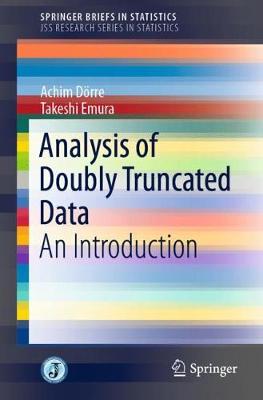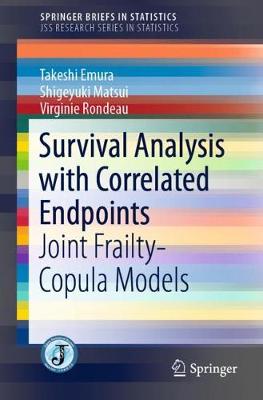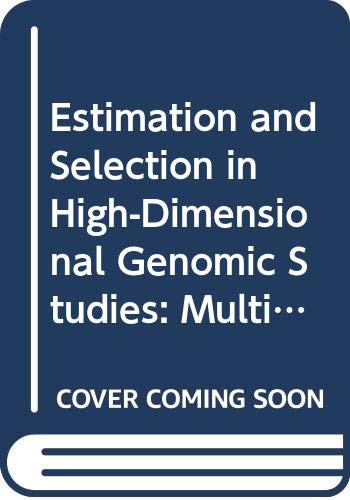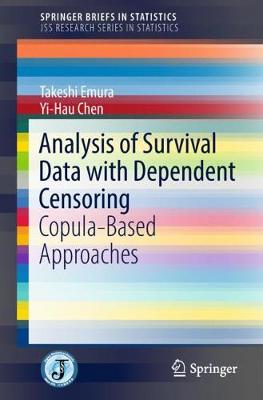SpringerBriefs in Statistics
5 total works
Copula-Based Markov Models for Time Series
by Li-Hsien Sun, Xin-Wei Huang, Mohammed S. Alqawba, Jong-Min Kim, and Takeshi Emura
This book provides statistical methodologies for time series data, focusing on copula-based Markov chain models for serially correlated time series. It also includes data examples from economics, engineering, finance, sport and other disciplines to illustrate the methods presented. An accessible textbook for students in the fields of economics, management, mathematics, statistics, and related fields wanting to gain insights into the statistical analysis of time series data using copulas, the book also features stand-alone chapters to appeal to researchers.
As the subtitle suggests, the book highlights parametric models based on normal distribution, t-distribution, normal mixture distribution, Poisson distribution, and others. Presenting likelihood-based methods as the main statistical tools for fitting the models, the book details the development of computing techniques to find the maximum likelihood estimator. It also addresses statistical process control, as well as Bayesian and regression methods. Lastly, to help readers analyze their data, it provides computer codes (R codes) for most of the statistical methods.
This book introduces readers to statistical methodologies used to analyze doubly truncated data. The first book exclusively dedicated to the topic, it provides likelihood-based methods, Bayesian methods, non-parametric methods, and linear regression methods. These procedures can be used to effectively analyze continuous data, especially survival data arising in biostatistics and economics. Because truncation is a phenomenon that is often encountered in non-experimental studies, the methods presented here can be applied to many branches of science. The book provides R codes for most of the statistical methods, to help readers analyze their data. Given its scope, the book is ideally suited as a textbook for students of statistics, mathematics, econometrics, and other fields.
Survival Analysis with Correlated Endpoints
by Takeshi Emura, Shigeyuki Matsui, and Virginie Rondeau
This book introduces readers to advanced statistical methods for analyzing survival data involving correlated endpoints. In particular, it describes statistical methods for applying Cox regression to two correlated endpoints by accounting for dependence between the endpoints with the aid of copulas. The practical advantages of employing copula-based models in medical research are explained on the basis of case studies.
In addition, the book focuses on clustered survival data, especially data arising from meta-analysis and multicenter analysis. Consequently, the statistical approaches presented here employ a frailty term for heterogeneity modeling. This brings the joint frailty-copula model, which incorporates a frailty term and a copula, into a statistical model. The book also discusses advanced techniques for dealing with high-dimensional gene expressions and developing personalized dynamic prediction tools under the joint frailty-copula model.
To help readers apply the statistical methods to real-world data, the book provides case studies using the authors' original R software package (freely available in CRAN). The emphasis is on clinical survival data, involving time-to-tumor progression and overall survival, collected on cancer patients. Hence, the book offers an essential reference guide for medical statisticians and provides researchers with advanced, innovative statistical tools. The book also provides a concise introduction to basic multivariate survival models.
Estimation and Selection in High-Dimensional Genomic Studies
by Hisashi Noma and Shigeyuki Matsui
Analysis of Survival Data with Dependent Censoring
by Takeshi Emura and Yi-Hau Chen
This book introduces readers to copula-based statistical methods for analyzing survival data involving dependent censoring. Primarily focusing on likelihood-based methods performed under copula models, it is the first book solely devoted to the problem of dependent censoring.
The book demonstrates the advantages of the copula-based methods in the context of medical research, especially with regard to cancer patients’ survival data. Needless to say, the statistical methods presented here can also be applied to many other branches of science, especially in reliability, where survival analysis plays an important role.
The book can be used as a textbook for graduate coursework or a short course aimed at (bio-) statisticians. To deepen readers’ understanding of copula-based approaches, the book provides an accessible introduction to basic survival analysis and explains the mathematical foundations of copula-based survival models.




